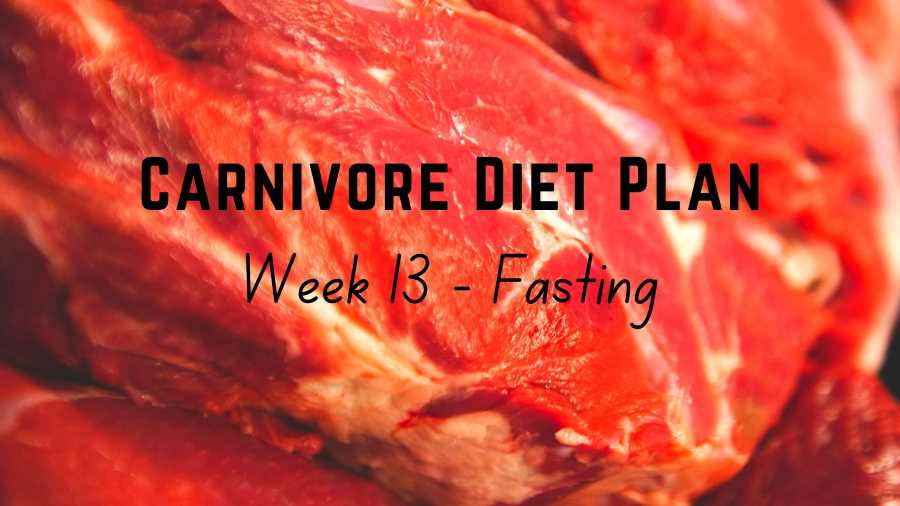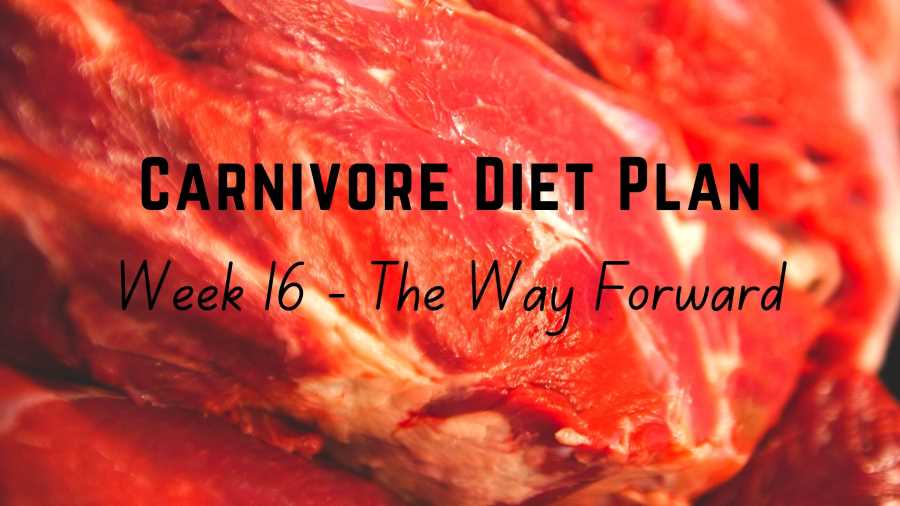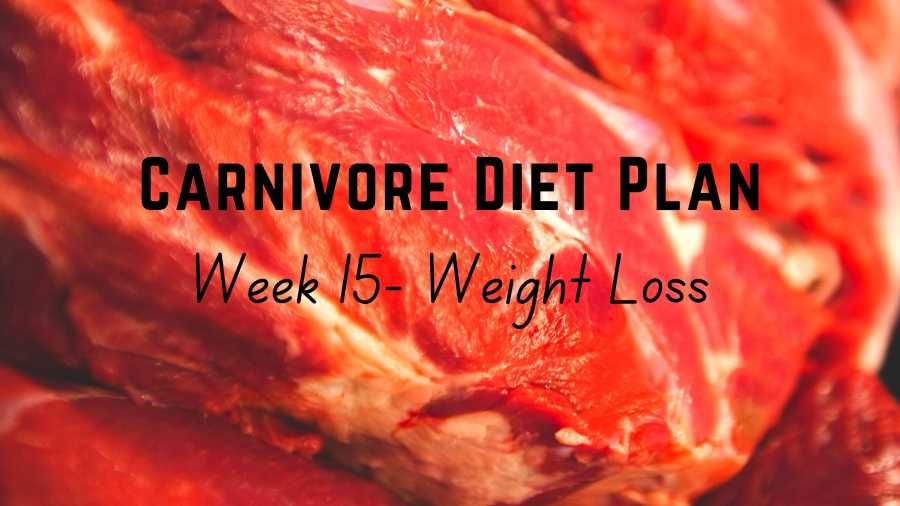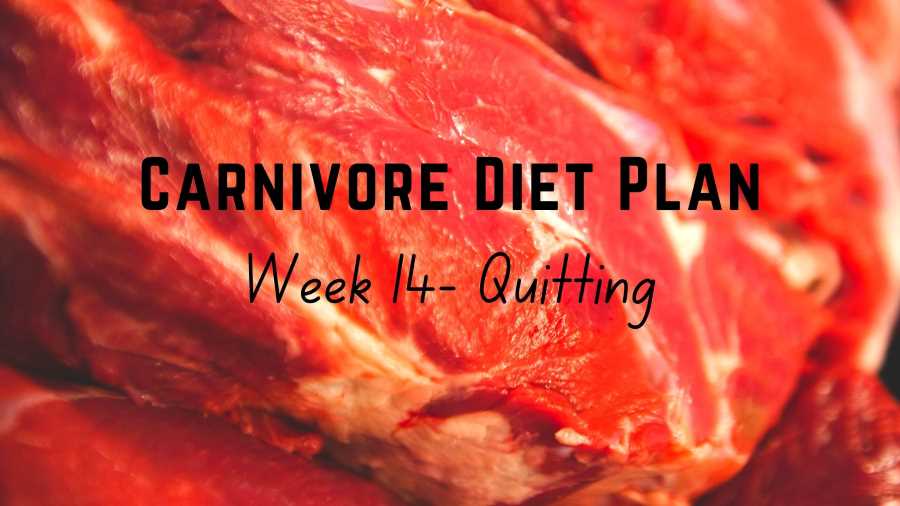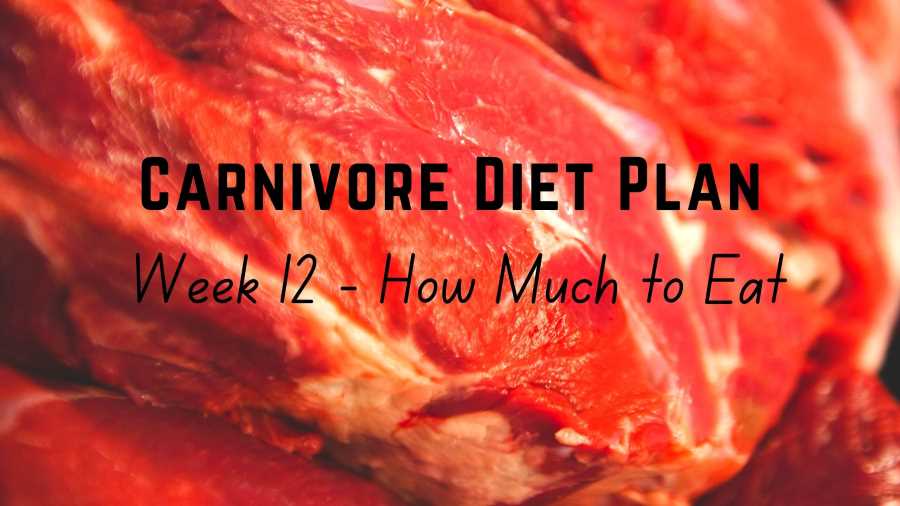This week of the program covers fasting.
A big problem in today’s world is we have access to too much food, not just in developed countries but also in many developing countries. We eat too much and too often.
Our ancestors certainly had access to nowhere as much food as we have today and they were likely to have occasionally gone for extended periods of time with little or no food at all.
While not everything they did was healthy according to today’s standards and we don’t have to imitate their lifestyle exactly, the fact that two-thirds of the adult population in developed countries are either overweight or obese indicates that most of us are eating way too much. Eating less and less often will do many of us good.
Fasting is an effective way to deal with this problem and the good news is when you are on the carnivore diet you will naturally extend your fasting period without much effort.
The main reason that makes us eat too much and too often is we eat the wrong types of foods, mainly nutritionally void foods. When we eat calorie-rich but nutrient-poor food, our body knows it and it craves the missing nutrients. Our craving is our body crying out for vital nutrients, not more energy.
When you switch to the carnivore diet, you will be eating the most nutrient-dense and bioavailable food on the planet.
Your intelligent body will immediately know it. You will feel incredibly satiated and satisfied when you eat meat. As a result, if you follow your hunger cues, you will find that you will need to eat less and less often on the carnivore diet without even trying.
As mentioned in week 8 of the program, in a survey on the carnivore diet experience of 2029 people, 83% of the participants who have been on the carnivore diet for at least six months reported that they ate only 2 times a day or less.
If you eat one to two times a day, you would have been intermittent fasting on a daily basis for a lot longer compared to someone on a standard American diet who is likely to eat three main meals a day plus snacks.
There are two main types of fasting: intermittent fasting and periodic fasting.
Intermittent fasting generally refers to an eating pattern that switches between periods of eating and fasting. This is what we do all the time, the key issue here is the length of the fasting period. Intermittent fasting generally refers to the fasting period shorter than 24 hours in a 24-hour window.
Periodic fasting generally refers to fasting that lasts from a couple of days to a few weeks.
Intermittent fasting methods
Below are brief descriptions of four popular intermittent fasting methods: time-restricted feeding, warrior diet, 5:2 diet, and alternate-day fasting.
Time restricted feeding
Under this method, you restrict your feeding window to a short period of time such as 1 hour, 2 hours, 4 hours or 8 hours a day.
If you eat within only 1 hour each day, you will be fasting for 23 hours each day.
You are likely to eat only one meal a day in this case and this can appeal to many people because you just need to cook, eat and clean once a day and can spend the rest of the day on other things. You can choose to eat just breakfast or an early dinner with the family.
If you are not very physically active and want to accelerate weight loss, eating once a day and fasting for the rest of the time can help you achieve your weight loss goal faster. Just make sure you eat a lot of nutrient-dense food (ruminant meat, ruminant fat, and organs).
If you eat within 4 hours, you will be fasting for 20 hours a day. You can fit one small meal and one big meal within this feeding window.
If you eat within 8 hours, you will be fasting for 16 hours. You can do this by fasting, for example, from 4 p.m. to 8 a.m. the next day, or 6 p.m. till 10 a.m. the next day, or from 8 p.m. till 12 noon the next day.
The 16/8 method is a popular intermittent fasting method. It is suitable for people who are physically active with a high energy need and eating one meal a day does not provide enough calories or causes digestive discomfort.
You can fit in two meals a day with the 16/8 program and can choose either breakfast and dinner or lunch and dinner with the family.
A meta-analysis of randomized control trials to date found that time-restricted feeding (defined as 4-8 hours ad-lib unrestricted eating per 24 hours) resulted in a significant decrease in weight, fat mass, and a slight decrease in total lean mass compared with a control diet (ad-lib eating per usual habits).[1]
The Warrior Diet
The Warrior Diet is a form of intermittent fasting that involves abstaining from food or eating very little for most of the day (up to 20 hours) and feasting a big meal towards the end of the day.
The Warrior Diet was created in 2001 by Ori Hofmekler, a former member of Israel’s elite special forces. Ori Hofmekler was looking for an eating pattern that enhances performance and was inspired by the eating habits of the Romans and the hunter-gatherer lifestyle.
The Ancient Romans reportedly had only one substantial meal a day, usually consumed at around 16:00. Although they also ate at sunrise and at noon, these meals were frugal, light, and quick. They believed that eating more than once per day was unhealthy and a form of gluttony.[2, 3]
Hunter-gatherers would typically eat little during the day and then eat a lot toward the end of the day after a successful hunt.
This diet is similar to the 20/4 time-restricted feeding method although you are allowed to drink low-calorie fluids and little snacks during the fasting hours.
There is no evidence supporting this diet and Ori Hofmekler himself acknowledged that there is no scientific basis for it.
However, I think this diet does have an appeal and can suit people with a busy daily schedule. Cooking, ordering, eating, and digesting food do get in the way if you do it too often during the day.
Interestingly, this is basically the way Joe and Charlene Anderson‘s family has been eating for over 20 years. They eat only one meal a day at dinner time and eat until they are full. During the day, they only drink water, no tea, coffee, or snack.
5:2 fast
This fasting program was created by Dr. Michael Mosley and became popular following a BBC documentary in 2012.
This program is simple, you will eat as you normally would for five days but will restrict your calorie intake to 500 calories for women and 600 calories for men on 2 fasting days.
This program does not specify how many meals you should eat a day or what you should eat.
Restricting your calories significantly for two days has potential benefits in theory. However, there is little evidence to support this fasting approach.
In a recent randomized control study, people on the 5:2 diet experienced higher weight loss at 6 weeks compared to people receiving standard general dietary advice. But by one year, the difference was no longer significant. Adherence to this fasting program was initially high but declined significantly over time.[4]
There is a new 5:2 diet also promoted by Dr. Michael Mosley that encourages people to follow a Mediterranean-style diet for 5 days with no calorie restriction and consume 800 calories on 2 fasting days.
I haven’t tried this fasting approach before but to me it’s more difficult to adhere to than a regular intermittent fasting routine like 16/8 or 20/4.
Alternate day fasting
With this fasting method, you eat as usual every other day and, on alternate fasting days, you either don’t eat at all or restrict calorie intake significantly, for example consuming up to 500 calories a day.
This is a more extreme version of the 5:2 diet with a more substantial calorie restriction.
However, there isn’t much evidence supporting this way of fasting. A small randomized control study found that “alternate-day fasting did not produce superior adherence, weight loss, weight maintenance, or cardioprotection vs daily calorie restriction“. [5]
Choosing a suitable intermittent fasting method
I like routine and prefer the time-restricted feeding method.
I believe sticking to a regular feeding window like 16/8 or 20/4 would work better for many people than alternate-day fasting or 5:2 fast.
Eating as much as you want on feasting days and restricting your calorie to 25% of the usual intake on fasting days will mean fighting intense hunger on those days.
However, the best intermittent fasting method is the one that works for you and you feel comfortable and happy with. Whichever way you choose, if it is a constant struggle to fight hunger, it is not a good sign.
Extended periodic fasting
Intermittent fasting methods as described above are generally safe because you never go without food for more than 24 hours.
Extended fasts that last longer than 24 hours can have some added benefits.
When you are not eating, your body is free from the burden of digesting food and can focus on detoxing, healing, cleaning out old and damaged parts of cells and recycling them, and burning off the excess fat storage.
Animal studies and clinical trials have shown that intermittent fasting increases life span, slows or reverses aging, and improves many health conditions including obesity, diabetes mellitus, cardiovascular disease, cancers, and neurologic disorders.[6, 7, 8, 9]
However, as I have previously written in this in-depth post on fasting on the carnivore diet, long fasts are definitely not for everyone.
If you start the carnivore diet to fix leaky gut, autoimmune diseases and obesity-related health problems, it’s best to still stay with this general principle: eat when you are hungry, eat till you are full and don’t overeat until your health problems are clear.
Those health problems don’t emerge overnight. They are likely a direct result of eating a nutrition-poor diet over a long period of time.
Therefore, healing will take time and it’s important to provide your body with the nutrients it needs to support this process. If you are malnourished, cutting off nutrient supply may even hinder your body’s ability to recover.
Give your body time and don’t overcomplicate the process.
There are people who have cured some serious illnesses with extended fasting but everybody is different. Please don’t attempt to do this on your own without consulting first with your doctor.
As mentioned above, you will feel satiated for longer and feel hungry a lot less frequently on the carnivore diet. You will already be naturally fasting for a longer period of time on a daily basis without trying if you follow your body’s hunger signals.
In addition, the following people should not fast, especially for longer than 24 hours without clearing it first with their doctor or without appropriate medical supervision during the entire fast:
- If you are malnourished, you should not fast. Even if you have a lot of fat reserve to sustain you, your nutrient reserve will be further depleted on a long fast
- If you are planning to conceive, pregnant or breastfeeding, you should not fast. You need to be in an optimal nutritional status to prepare for the arrival of your child or to nurse your child. Breast milk is the one and the only food your newborn should have. The quality of your milk can affect your child’s health, intelligence and future
- If you are underweight, you should not fast. Your body will be forced to break down muscles for energy
- If you have an eating disorder, you should not fast. If fasting is subsequently followed by binge eating episodes, it will do more harm than good
- If you are under 18, it’s obvious that you should not fast. Your body is going through a growth period, fasting can result in stunted growth
- If you are an elderly, you should not fast. The Buchinger Wilhelmi fasting clinic in Germany has clients in their 80s but they would be given a tailored program and under daily supervision of medical professionals the whole time. They would also be given supplements as needed.
If you are healthy, don’t fall in the above categories and would like to do a longer fast on occasion, please check out this in-depth guide on doing long water fasts on the carnivore diet.
This post answers all potential questions that you might have about water fasting on the carnivore diet such as when is the best time to start a fast, what you should eat before the fast, how long you should fast for, what to drink during the fast, whether you need to supplement during the fast, whether you should exercise during the fast, how to break your fast safely, etc.
Please note, although fasting is included in this week of the program, you certainly don’t have to do it now if you don’t feel like it.
You can either skip it altogether or make a note to come back later in one or two years’ time when you might consider incorporating fasting into your lifestyle.
Take-home message for this week
This week, please continue to eat a lot of ruminant meat and organ meat, get sun exposure every day, stay physically active, and try to eat less frequently and eat early. In summary:
- Eat ruminant meat (e.g. beef, lamb, bison, goat, kangaroo etc.)
- Eat only when you are hungry and eat until you are full but don’t overeat
- Cook some of your meat to blue, rare, medium rare, or medium
- Have liver and other organ meat regularly (3 – 5 times a week or more)
- Drink a small cup of bone broth daily
- Have other well-tolerated animal-based food such as eggs, pork, poultry, seafood and dairy occasionally and choose pasture-raised and/or wild-caught sources
- Have a serving of well-tolerated seasonal fruits and other plant food on occasion if you wish
- It’s up to you to include or exclude salt based on your experiment in week 6
- Drink water to thirst
- Get about 30 minutes of sunlight every day
- Incorporating as much physical movements throughout the day as you can
- Aim to have 1 – 2 moderate to high intensity interval training sessions and 2-3 resistance training sessions a week
- Eat one to two meals a day and try to have the last meal of the day as early as possible
- Adjust your total daily calorie intake in accordance with your health goals
- If you wish, establish an intermittent fasting routine that fits your lifestyle.
Links to all posts in the 16-week carnivore diet plan
- 16-Week Carnivore Diet Plan: An overview
- Week 1: Preparation
- Week 2: Ruminant and liver
- Week 3: Ruminant and more organ meat
- Week 4: Fat to protein ratio
- Week 5: Sun exposure
- Week 6: Salt experiment
- Week 7: Ancestral movements
- Week 8: Meal frequency and meal timing
- Week 9: Intolerance testing (other animal-based food)
- Week 10: Intolerance testing (fruits)
- Week 11: Intolerance testing (other plant food)
- Week 12: How much to eat
- Week 13: Fasting
- Week 14: Quitting
- Week 15: Weight loss
- Week 16: The Way Forward.
If you find this post helpful, please consider sharing this post and my site with your family, friends, and followers. That would be much appreciated. Please also check out my library of articles on the carnivore diet here which is updated regularly.
Disclaimer: The information in this post is for reference purposes only and not intended to constitute or replace professional medical advice. Please consult a qualified medical professional before making any changes to your diet or lifestyle.
Photo credit: Julian Peter on Pexels

